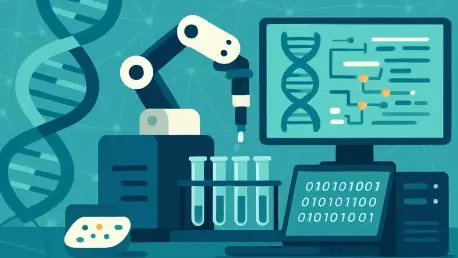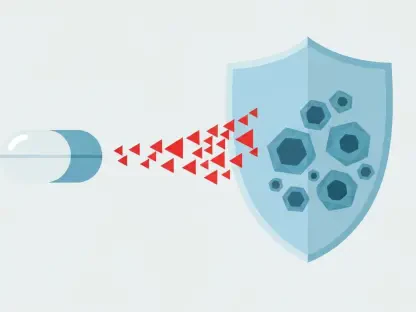I’m thrilled to sit down with Ivan Kairatov, a seasoned biopharma expert with a wealth of experience in research and development, as well as a deep understanding of technological innovation in the industry. Today, we’re diving into the exciting collaboration between two leaders in laboratory automation and genomic technologies, focusing on their groundbreaking automated target enrichment protocols. Our conversation will explore how these innovations streamline genomic workflows, the benefits of automation in sequencing, the collaborative process behind this development, and what it means for researchers in the field.
Can you walk us through the significance of the new automated target enrichment protocols for genomic workflows?
Absolutely. These protocols represent a major leap forward in genomic research by automating a critical step in library preparation for sequencing. They’re designed to optimize the process of target enrichment, which is essential for focusing on specific regions of the genome during analysis. By reducing manual intervention, these protocols help labs achieve more consistent results, minimize errors, and significantly speed up workflows, ultimately enabling researchers to handle larger sample volumes with greater precision.
How do these protocols specifically integrate with the firefly+ platform, and what makes this combination unique?
The firefly+ platform is a cutting-edge automation system that excels in liquid handling and workflow integration. These new protocols are tailored to work seamlessly with the platform’s advanced capabilities, automating complex steps in library preparation. What’s unique here is the precision and hands-off nature of the process—researchers can set up their experiments and let the system handle the intricate tasks, ensuring uniformity across runs and freeing up valuable time for other research activities.
What role do specific products, like the SureSelect Max DNA Library Prep Kits, play in these protocols?
These kits are a cornerstone of the protocols, providing the high-quality chemistry needed for effective target enrichment. They’re designed to deliver robust performance in preparing DNA libraries, ensuring that the enriched samples are ready for sequencing with high fidelity. The protocols have been optimized to fully support these kits, meaning labs using them can trust that the automated process will maintain the integrity and reliability of the results they expect from such a gold-standard product.
Can you share the story behind how this collaboration came to be and what the primary goals were?
The collaboration was born out of a shared vision to address inefficiencies in genomic sequencing workflows. Both parties recognized that automation could tackle some persistent challenges in library prep and target enrichment. The main goal was to create a solution that would allow labs to scale their operations without sacrificing quality—essentially, to make high-throughput sequencing more accessible and reliable. It was a mutual effort, with a focus on combining expertise in automation and chemistry to push the boundaries of what’s possible in genomics.
What can you tell us about the development process and any hurdles that had to be overcome during this partnership?
The development process was highly collaborative, involving in-house applications specialists and R&D teams working closely together. They focused on rigorous testing and optimization to ensure the protocols performed flawlessly under real-world lab conditions. One of the bigger challenges was aligning the automation technology with the specific requirements of the chemistry involved—it required a lot of fine-tuning. Despite these hurdles, the teams managed to create a robust set of protocols over a span of dedicated effort, proving the value of persistence and cross-disciplinary collaboration.
In what ways does automating target enrichment on the firefly+ platform enhance reproducibility for researchers?
Automation is a game-changer for reproducibility. Manual library preparation often introduces variability due to human error or slight differences in technique. By automating target enrichment on the firefly+ platform, every step is executed with the same precision, down to the microliter. This consistency means that results are far more repeatable, which is critical for labs conducting large-scale studies or clinical research where reliability is non-negotiable.
How does this automation impact time efficiency for labs working on sequencing projects?
The time savings are substantial. Manual library prep can take hours of hands-on work, especially for complex panels or high sample volumes. With these automated protocols, researchers can set up the system and walk away, letting it handle the repetitive tasks. For instance, a process that might take a full day manually could be reduced to a fraction of that time, allowing labs to process more samples in a week and accelerate their research timelines significantly.
Why is it important that these protocols are accessible through the firefly community cloud, and how does that benefit users?
Making these protocols available on the community cloud is a brilliant move because it provides instant access to cutting-edge tools for all users of the platform. Researchers don’t have to wait for custom setups or spend time developing their own methods—they can download and implement these validated protocols right away. It democratizes access to high-quality automation, lowers the barrier to entry for smaller labs, and fosters a collaborative environment where users can share feedback and improvements.
Can you elaborate on why specific panels like the Exome V8 and a smaller Comprehensive Cancer Panel were chosen for development and testing?
These panels were selected because they represent a broad spectrum of use cases in genomic research. The Exome V8 is widely used for whole-exome sequencing, covering a vast portion of the coding regions of the genome, while the smaller cancer panel targets specific genes relevant to oncology. Testing on these allowed the teams to ensure the protocols could handle both comprehensive and focused applications, providing confidence that they would be adaptable to a wide range of research needs.
What is your forecast for the future of automated genomic workflows, especially in terms of addressing sequencing bottlenecks?
I’m incredibly optimistic about the future of automated genomic workflows. We’re just scratching the surface of what’s possible with platforms like these. I foresee automation becoming even more integrated, not just in library prep but across the entire sequencing pipeline, from sample extraction to data analysis. As for bottlenecks, I believe we’ll see continued innovation in throughput and scalability—solutions that allow labs to process thousands of samples simultaneously without compromising quality. Collaborations like this one are paving the way for a future where sequencing is faster, more affordable, and accessible to labs of all sizes.









